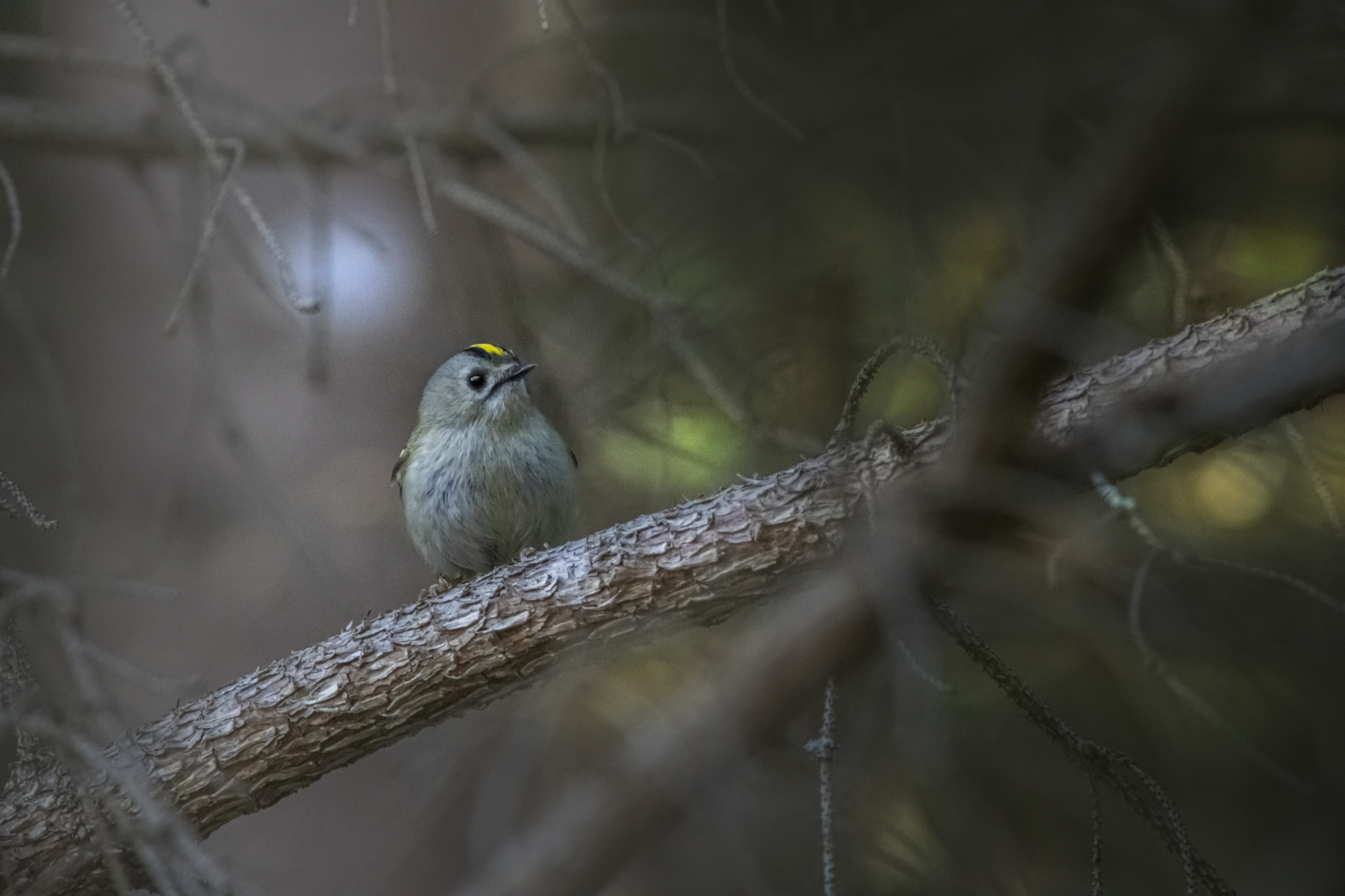Deep Overview: Goldcrest (Regulus regulus)
The Goldcrest (Regulus regulus) is Europe’s smallest bird, often called the “King of the Birds” due to its striking golden crown. This tiny, energetic songbird is highly active, flitting through coniferous forests in search of insects. It is widely distributed across Europe and Asia, adapting well to both natural and urban environments. Despite its delicate appearance, the Goldcrest is surprisingly hardy, enduring harsh winters with an efficient metabolism and social foraging behavior.
Taxonomy & Classification
- Kingdom: Animalia
- Phylum: Chordata
- Class: Aves
- Order: Passeriformes (Perching Birds)
- Family: Regulidae (Kinglets)
- Genus: Regulus
- Species: Regulus regulus
- Common Name: Goldcrest
- Other Names:
- “King of the Birds” (from European folklore)
- “Gold-crowned Kinglet” (alternative translation)
Physical Description
- Size & Weight:
- Length: 8.5–9.5 cm (smaller than a wren)
- Wingspan: 13–16 cm
- Weight: 4.5–7 g (lighter than a teaspoon of sugar)
- Plumage & Markings:
- Head: Distinct yellow/golden crest bordered by black
- Males have an orange tinge in the crest
- Body: Soft olive-green back, pale underparts
- Wings: White-edged feathers with a single white wing bar
- Beak: Small, pointed, and black
- Legs & Feet: Thin, pale brown to orange-brown
- Head: Distinct yellow/golden crest bordered by black
- Key Identification Features:
- Constant, restless movement
- Golden-yellow crown stripe
- Thin, high-pitched calls
Distribution & Habitat
- Geographic Range:
- Found across Europe, North Africa, and temperate Asia
- Resident in the UK, Scandinavia, Russia, China, Japan
- Some populations migrate south in winter
- Preferred Habitat:
- Primarily in coniferous forests (spruce, fir, pine)
- Also found in mixed woodlands, gardens, parks, and urban green spaces
- Nests in dense conifer branches, often high above the ground
Behavior & Adaptations
- Activity Pattern:
- Diurnal (active during the day)
- Flight & Movement:
- Fast, fluttering movement between branches
- Hops energetically among foliage, often hanging upside-down
- Social Behavior:
- Usually solitary or in pairs during breeding season
- Forms mixed-species flocks in winter (often with tits and warblers)
- Roosts in small communal groups in cold weather for warmth
- Camouflage & Adaptations:
- Small size and greenish plumage help it blend into foliage
- Extremely fast metabolism, allowing it to survive in freezing conditions
Song & Vocalizations
- Call:
- High-pitched, thin “tsee-tsee-tsee”
- Often repeated rapidly, hard to hear for some humans
- Song:
- Soft, rapid trilling with rising and falling notes
- Usually sung from treetops during breeding season
Diet & Feeding Habits
- Primary Diet:
- Insects, spiders, and larvae (aphids, caterpillars, springtails)
- Occasionally seeds and sap
- Feeding Behavior:
- Constantly searches for tiny insects on tree bark and needles
- Forages in fast, hovering movements, sometimes like a hummingbird
- Occasionally visits garden feeders for suet and mealworms
Reproduction & Life Cycle
- Breeding Season:
- April to July, with two broods per year
- Mating Behavior:
- Males display by fluffing crest feathers and singing intensely
- Nest Construction:
- Built in dense conifers, suspended like a hanging pouch
- Made from moss, spider silk, feathers, and lichen
- Eggs & Incubation:
- Clutch size: 6–12 eggs
- Eggs: Tiny, white with reddish speckles
- Incubation period: 14–16 days (female incubates)
- Fledging: Chicks leave the nest at 16–19 days old
- Lifespan:
- Typically 2–3 years, but some reach 5–6 years
Predators & Threats
- Natural Predators:
- Sparrowhawks, owls, and larger songbirds
- Mammals (weasels, squirrels, domestic cats)
- Human-Related Threats:
- Habitat loss (deforestation and removal of mature trees)
- Climate change (affecting insect availability)
- Collisions with windows
- Conservation Status:
- Least Concern (IUCN Red List) but declining in some areas
- Benefits from forest conservation and urban tree planting
Ecological Importance
- Insect Control:
- Helps control pest insect populations
- Pollination Assistance:
- May assist in pollination by feeding on tree sap and small insects near flowers
- Indicator Species:
- Presence indicates healthy conifer forests
Relationship with Humans
- Folklore & Symbolism:
- In European mythology, the Goldcrest was considered “King of the Birds”
- Old tales say it rode on an eagle’s back to win a flying contest
- Attracting Goldcrests to Gardens:
- Provide conifer trees, berry bushes, and dense shrubs
- Offer mealworms, suet, and soft-seed mixes
- Urban Adaptation:
- Increasingly found in parks and gardens, where it adapts to human presence
Similar Species & Identification
- Firecrest (Regulus ignicapilla)
- Has a white eyebrow stripe, more contrasting facial markings
- Gold-crowned Kinglet (Regulus satrapa) (North America)
- Slightly larger, more prominent wing bars
- Willow Warbler (Phylloscopus trochilus)
- Similar in size but lacks a crest and has a more melodic song
Fun Facts
- Europe’s smallest bird—lighter than a 1-pound coin!
- Burns calories extremely fast, needing to eat constantly in winter
- Can endure -30°C winters by huddling with others for warmth
- Nest is one of the smallest and most insulated among songbirds
- Has been nicknamed the “woodland fairy” due to its tiny size and fast movement
Conclusion
The Goldcrest (Regulus regulus) is a tiny, energetic songbird that thrives in conifer forests, gardens, and urban parks. Recognized by its bright yellow crown, olive-green plumage, and rapid movements, it is Europe’s smallest bird yet surprisingly resilient in cold climates. While generally common, it faces challenges from habitat loss and climate change. Encouraging forest conservation and planting more coniferous trees can help support its populations.
Would you like tips on how to identify its call or attract it to your garden? 😊
Views: 1326
Subscribe to the newsletter:
